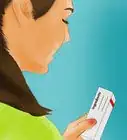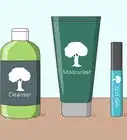This article was co-authored by Laura Marusinec, MD. Dr. Marusinec is a board certified Pediatrician at the Children's Hospital of Wisconsin, where she is on the Clinical Practice Council. She received her M.D. from the Medical College of Wisconsin School of Medicine in 1995 and completed her residency at the Medical College of Wisconsin in Pediatrics in 1998. She is a member of the American Medical Writers Association and the Society for Pediatric Urgent Care.
There are 10 references cited in this article, which can be found at the bottom of the page.
This article has been viewed 295,207 times.
Approximately 85% of all teens deal with acne to one degree or another. Contrary to popular belief, no link has been found between diet and acne. The actual cause is due to hormonal changes in teenagers, which produce additional facial oils. Most of these cases are basic and can be cleared up with a daily washing regimen that combats the extra facial oil. However, some cases may be severe or persistent enough to warrant a trip to the dermatologist.
Steps
Using over-the-Counter Treatments
-
1Keep hair clean. This step is especially important for teens with long hair. Oily hair or hair products in constant contact with the face can help clog pores. Even those with short hair can see blemishes around the hairline due to oily hair or hair products. Wash your hair regularly and try to keep your hair off of your face as much as possible.
-
2Wash twice daily. One of the biggest causes of teenage acne is increased oil production based on hormonal changes. Washing your face once a day can still leave oil and dirt behind to clog pores. Instead wash once in the morning and once in the evening with warm water and a mild oil-free cleanser.
- Use clean fingertips and not a washcloth to clean your face.[1]
- Do not use a regular bar soap or body wash. Always use a gentle cleanser especially formulated for facial skin.
- Do not over wash. Washing the face more than twice a day can dry out the skin, which can actually cause the oil glands to go into overdrive production and make the acne worse.[2]
- It can take anywhere from four-to-eight weeks of a daily regimen before you notice a significant difference.[3]
Advertisement -
3Use over-the-counter medications. Depending on the severity of your acne, you should also use an over-the-counter medication once or twice a day. The two most commonly used OTC acne treatments are benzoyl peroxide and salicylic acid.
- OTC medications come in gels, lotions, creams, soaps, and pads.[4] Gels and creams are good for spot treatments of problem areas whereas pads, soaps, and lotions are more commonly used on the entire face.
- In addition to clearing pores, benzoyl peroxide has antibacterial qualities that makes it more difficult for the acne-causing p. acnes bacteria. And benzoyl peroxide reduces inflammation (which causes redness and swelling) of the skin.[5]
- Benzoyl peroxide formulations are usually a 2.5% to 10% solution and salicylic acid formulations are usually 2% solutions.[6]
-
4Apply a moisturizer. Since the additional washing and OTC medications can dry out skin, you want to add a daily moisturizer to your regimen. A standard lotion can have oils that will clog pores as well, so find an oil-free moisturizer that is nonacnegenic or non-comedogenic.[7] These words simply mean that the product will not cause acne or clog pores.
- If you apply a moisturizer for daytime use, then you should find one with an SPF of 30 as well.[8]
-
5Use non-comedogenic cosmetics. While certain cosmetics like eye makeup and lipstick aren’t likely to cause acne trouble, others such as blushes and foundations can clog pores and worsen acne. Make sure than any cosmetics applied to the face say they are non-comedogenic, which means that they will not clog pores. Many major brands provide such products, so they are not difficult to find.
-
6Try a clay mask once per week. Using a clay mask once per week may help to eliminate excess oil and dirt, which may help with acne. You can find clay masks in most drug stores.
- Apply the mask to clean skin and leave it on until it dries completely, which takes about 10 to 15 minutes.
- Then, rinse off the mask using lukewarm water and your fingertips.
- Pat your face with a clean, dry towel and apply moisturizer after you remove the mask.
Treating Persistent or Severe Cases
-
1Consult a dermatologist. If you have persistent acne that doesn’t respond to the first method or if you have severe, cystic acne, then you should consider meeting with a dermatologist who can prescribe other medications.
-
2Ask about birth control. For many women, certain birth control medications can help regulate acne-causing hormones. Since hormones are the initial cause of acne, regulating these hormones can lead to decreased breakouts.[9]
-
3Ask about acne-treating antibiotics. Oral antibiotics can decrease the amount of the p. acnes bacteria on your skin, which can decrease inflammation.[10] Oral or topical antibiotics may be one of the first treatments that a dermatologist recommends for persistent acne.
- Antibiotic treatments will usually require daily dosages for four-to-six months. After which point, they will be tapered off.[11]
-
4Discuss other topical prescription options. In addition to some topical antibiotics, a dermatologist may want to prescribe other topical medications. These can range from prescription-strength benzoyl peroxide to azelaic acid or tazarotene and other retinoids.[12] [13]
- Most of these medications are meant to reduce skin lesions and inflammation associated with acne.
- Another topical medication called Dapsone gel (Aczone) is especially helpful for hormonal acne in women.
-
5Ask about isotretinoin. Isotretinoin is one of the most effective acne treatments available. However, it’s also the medication with some of the most serious potential side effects and risks, and usage is closely monitored.[14] Isotretinoin actually shrinks the size of oil glands, which causes them to produce less oil.[15]
- Side effects of isotretinoin include increased risk of depression, and it has also been tied to birth defects, so women who are pregnant will not be prescribed the medication. Other side effects may include very dry skin, dry eyes, and increased risk of sunburn.
- In addition, women who could become pregnant need to take birth control or abstain from sex about one month before, during, and for one to two months after taking Isotretinoin. They also need to take monthly pregnancy tests during this time.
- The medication is typically taken once or twice a day for sixteen-to-twenty weeks with results that are often permanent.[16]
-
6Look into other treatments that might be helpful for you. If topical and oral medications do not work for you, then you may want to consider other types of treatments for your acne. Ask your dermatologist about your options, which may include:[17] [18]
- Laser or light treatments, such as photodynamic therapy.
- Chemical peels.
- Extraction of blackheads and whiteheads.
- Microdermabrasion.
Expert Q&A
-
QuestionCan oily hair cause acne?
 Laura Marusinec, MDDr. Marusinec is a board certified Pediatrician at the Children's Hospital of Wisconsin, where she is on the Clinical Practice Council. She received her M.D. from the Medical College of Wisconsin School of Medicine in 1995 and completed her residency at the Medical College of Wisconsin in Pediatrics in 1998. She is a member of the American Medical Writers Association and the Society for Pediatric Urgent Care.
Laura Marusinec, MDDr. Marusinec is a board certified Pediatrician at the Children's Hospital of Wisconsin, where she is on the Clinical Practice Council. She received her M.D. from the Medical College of Wisconsin School of Medicine in 1995 and completed her residency at the Medical College of Wisconsin in Pediatrics in 1998. She is a member of the American Medical Writers Association and the Society for Pediatric Urgent Care.
Board Certified Pediatrician Oily hair can lead to more acne breakouts. It's only one factor in causing acne. But if your hair is oily, then look for gentle shampoos and conditioners or ask a salon for help. Some people even use shampoos with salicylic acid if their hair is really oily or if they have dandruff. Neutrogena has some good shampoos for this. Also try to keep your hair off of your face.
Oily hair can lead to more acne breakouts. It's only one factor in causing acne. But if your hair is oily, then look for gentle shampoos and conditioners or ask a salon for help. Some people even use shampoos with salicylic acid if their hair is really oily or if they have dandruff. Neutrogena has some good shampoos for this. Also try to keep your hair off of your face. -
QuestionI have tried every single method and acne is still on my face. Is there a medication that will burn off my acne?
 Laura Marusinec, MDDr. Marusinec is a board certified Pediatrician at the Children's Hospital of Wisconsin, where she is on the Clinical Practice Council. She received her M.D. from the Medical College of Wisconsin School of Medicine in 1995 and completed her residency at the Medical College of Wisconsin in Pediatrics in 1998. She is a member of the American Medical Writers Association and the Society for Pediatric Urgent Care.
Laura Marusinec, MDDr. Marusinec is a board certified Pediatrician at the Children's Hospital of Wisconsin, where she is on the Clinical Practice Council. She received her M.D. from the Medical College of Wisconsin School of Medicine in 1995 and completed her residency at the Medical College of Wisconsin in Pediatrics in 1998. She is a member of the American Medical Writers Association and the Society for Pediatric Urgent Care.
Board Certified Pediatrician Make sure you give a method a chance to work (usually 6-8 weeks), and that you are following the directions. If it's still not working, see a doctor, especially a dermatologist. They don't burn acne, but there are many treatments that can help, from different creams or oral medications, to treatments such as light or laser treatments, chemical peels, or microdermabrasion.
Make sure you give a method a chance to work (usually 6-8 weeks), and that you are following the directions. If it's still not working, see a doctor, especially a dermatologist. They don't burn acne, but there are many treatments that can help, from different creams or oral medications, to treatments such as light or laser treatments, chemical peels, or microdermabrasion. -
QuestionHow would you know if the cleanser is to strong for your skin?
 Laura Marusinec, MDDr. Marusinec is a board certified Pediatrician at the Children's Hospital of Wisconsin, where she is on the Clinical Practice Council. She received her M.D. from the Medical College of Wisconsin School of Medicine in 1995 and completed her residency at the Medical College of Wisconsin in Pediatrics in 1998. She is a member of the American Medical Writers Association and the Society for Pediatric Urgent Care.
Laura Marusinec, MDDr. Marusinec is a board certified Pediatrician at the Children's Hospital of Wisconsin, where she is on the Clinical Practice Council. She received her M.D. from the Medical College of Wisconsin School of Medicine in 1995 and completed her residency at the Medical College of Wisconsin in Pediatrics in 1998. She is a member of the American Medical Writers Association and the Society for Pediatric Urgent Care.
Board Certified Pediatrician The cleanser is too strong for your skin if you get redness, itching, or burning after using it, or if it makes your skin very dry. If this happens, try another cleanser with a weaker form of the medication (such as going from 10% benzoyl peroxide to 2.5%), or a different ingredient.
The cleanser is too strong for your skin if you get redness, itching, or burning after using it, or if it makes your skin very dry. If this happens, try another cleanser with a weaker form of the medication (such as going from 10% benzoyl peroxide to 2.5%), or a different ingredient.
Warnings
- Isotretinoin use should always be closely monitored. Women who have the risk of becoming pregnant should not take the drug, and anyone who starts feeling symptoms of depression while taking the drug should consult with their dermatologist immediately.⧼thumbs_response⧽
- Benzoyl Peroxide isn't always for everybody. Sometimes the side effects associated with it can make your skin irritated and appear red for up to 24 hours. Make sure it is right for you.⧼thumbs_response⧽
Things You'll Need
- You will need a gentle cleanser. It doesn't have to be a cleanser that specifically treats acne. As long as it fits your skin type (oily, dry, normal, sensitive, etc.) it will work.
- A spot treatment such as benzoyl peroxide or salicylic acid
- Moisturizer
References
- ↑ http://teens.webmd.com/girls-puberty-10/girls-teen-acne
- ↑ http://www.webmd.com/skin-problems-and-treatments/teen-acne-13/teenage-acne?page=2
- ↑ http://www.webmd.com/skin-problems-and-treatments/teen-acne-13/teen-acne-solutions
- ↑ http://www.webmd.com/skin-problems-and-treatments/teen-acne-13/teenage-acne?page=2
- ↑ http://www.webmd.com/skin-problems-and-treatments/teen-acne-13/teen-acne-solutions
- ↑ http://teens.webmd.com/girls-puberty-10/girls-teen-acne
- ↑ http://teens.webmd.com/girls-puberty-10/girls-teen-acne?page=1
- ↑ http://teens.webmd.com/girls-puberty-10/girls-teen-acne?page=1
- ↑ http://www.webmd.com/skin-problems-and-treatments/teen-acne-13/teen-acne-solutions?page=2
- ↑ http://www.webmd.com/skin-problems-and-treatments/teen-acne-13/teenage-acne?page=2
- ↑ http://www.webmd.com/skin-problems-and-treatments/teen-acne-13/teenage-acne?page=2
- ↑ http://www.nlm.nih.gov/medlineplus/druginfo/meds/a603020.html
- ↑ http://www.mayoclinic.org/drugs-supplements/tazarotene-topical-route/description/drg-20067364
- ↑ http://www.webmd.com/skin-problems-and-treatments/teen-acne-13/teenage-acne?page=2
- ↑ http://www.webmd.com/skin-problems-and-treatments/teen-acne-13/teenage-acne?page=2
- ↑ http://www.webmd.com/skin-problems-and-treatments/teen-acne-13/teenage-acne?page=2
- ↑ http://www.mayoclinic.org/diseases-conditions/acne/basics/treatment/con-20020580
- ↑ https://www.aad.org/public/diseases/acne-and-rosacea/acne#treatment
- ↑ http://www.webmd.com/skin-problems-and-treatments/teen-acne-13/teenage-acne?page=1
About This Article
Acne can be frustrating and make you feel self-conscious, but it’s something most teens have to deal with so you’re not alone! Wash your face twice a day with a mild cleanser and warm water, which will keep your pores clean and help prevent more acne. You should also keep your hair clean, which will avoid transferring oil to your skin. It’s best to moisturize once or twice a day to keep your skin hydrated. You can also use over-the-counter acne treatments, which help to reduce the inflammation of your acne. Look for products containing benzoyl peroxide or salicylic acid. If you have severe acne that doesn’t improve, visit your doctor, who can refer you to a dermatologist or give you stronger treatments. For more tips from our Medical co-author, including how to make a cleansing face mask to help your acne, read on!
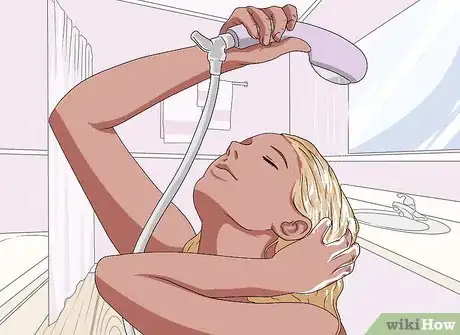
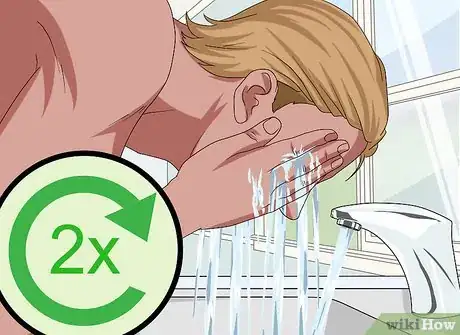
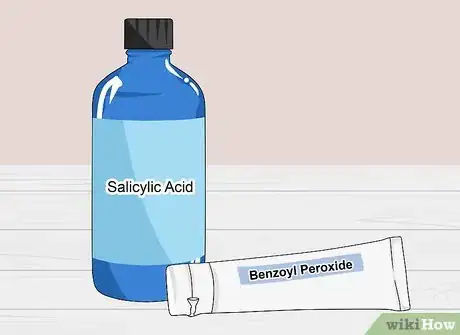
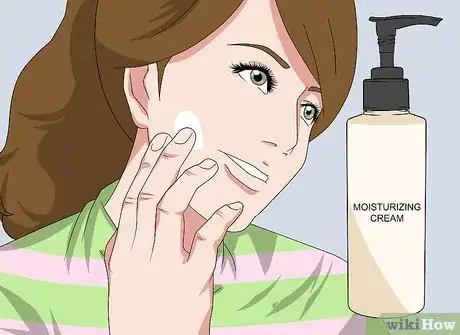
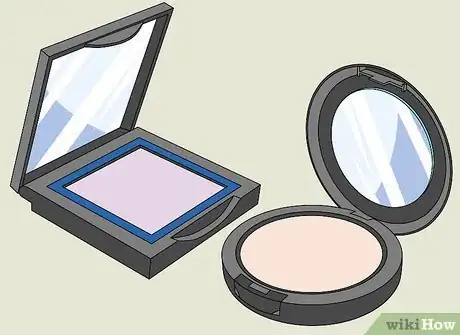
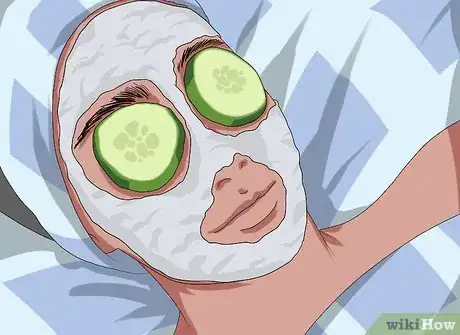
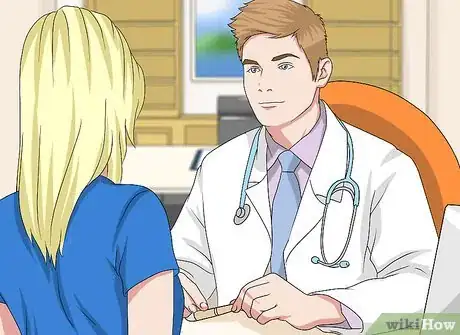
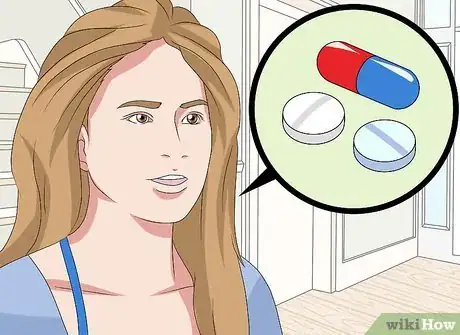
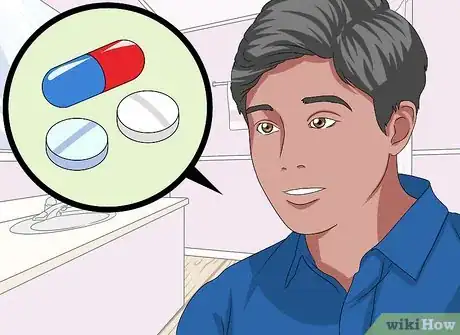

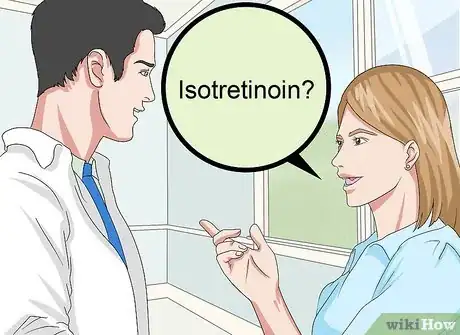
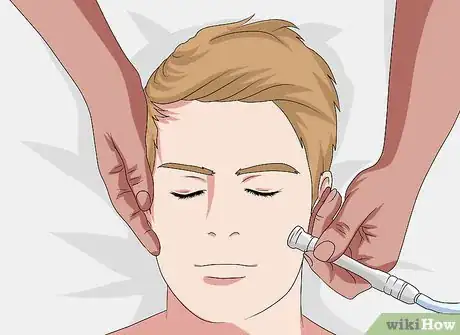
-Step-7-Version-2.webp)

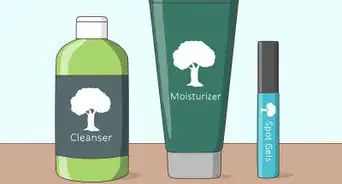
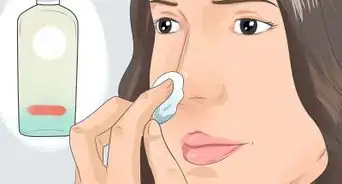
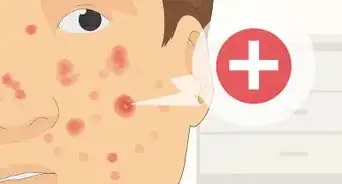
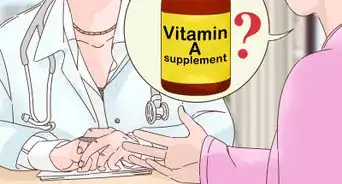
-Step-8-Version-2.webp)
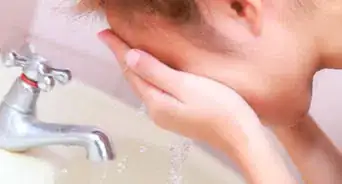
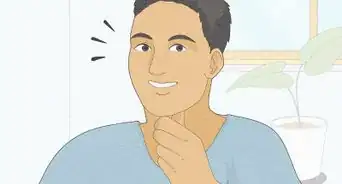
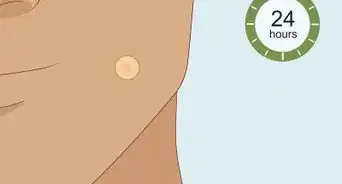

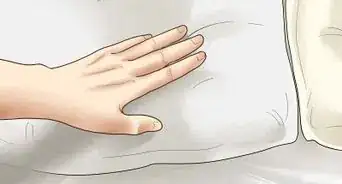










-Step-7-Version-2.webp)

